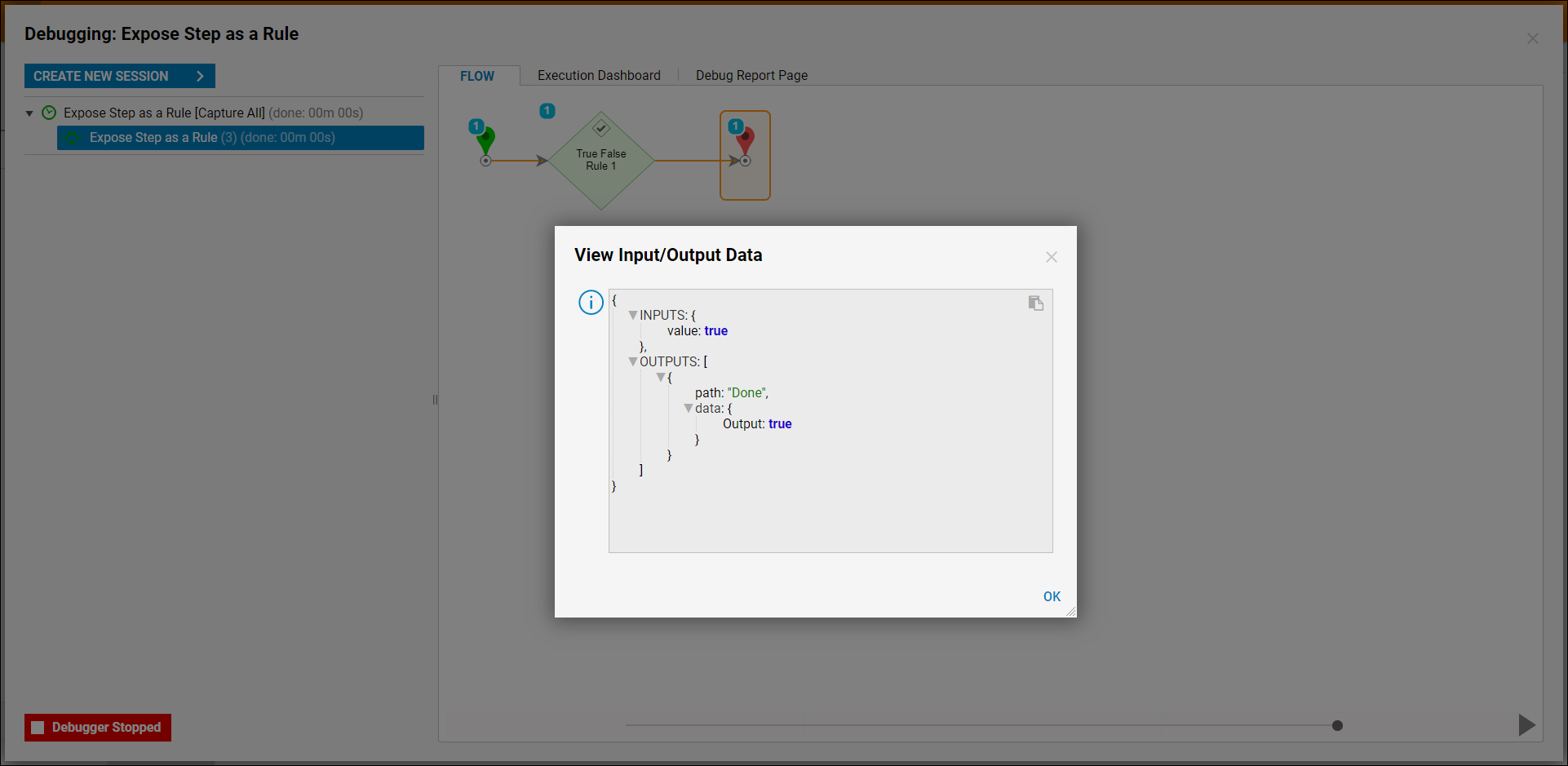Overview
There are many steps in Decisions that are evaluated as Rules when used as a step in a Flow. There is a configuration available for these steps that have a True/False outcome called “Expose Step as a Rule”. This setting, when enabled, will show a True path and a False path for these Rules. When this setting is disabled, the step will instead have a single path as an outcome “Done”, and the True/False result will be returned as output data.
The following example will show the differences when this setting is both enabled and disabled.
Example
- In a Designer Folder, select CREATE FLOW. Select Default under Flow and click CREATE. Name the Flow and click CREATE to proceed to the Flow Designer.
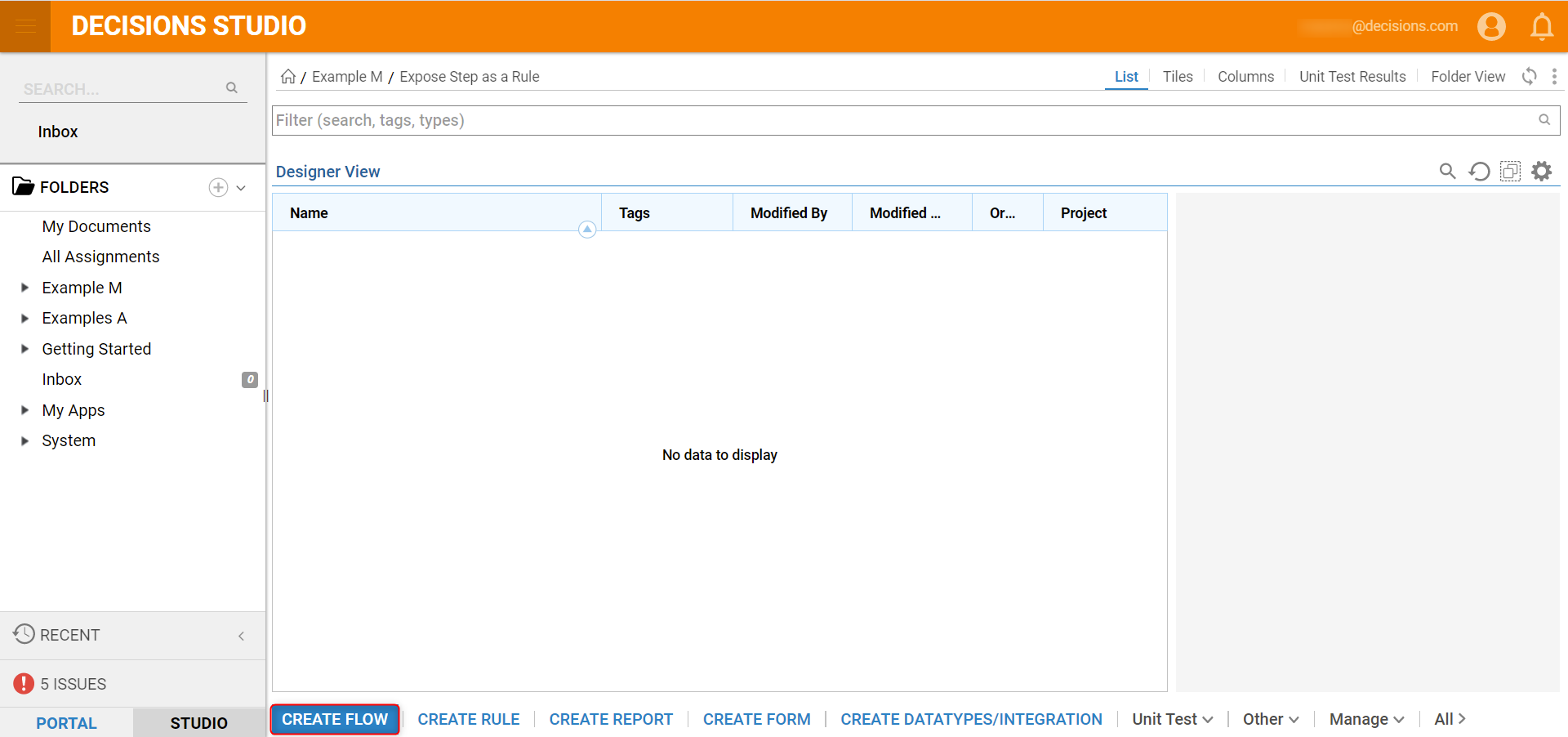
- In the Flow Designer add a True False Rule step from the All Steps [Catalog] > Data > Rules category.
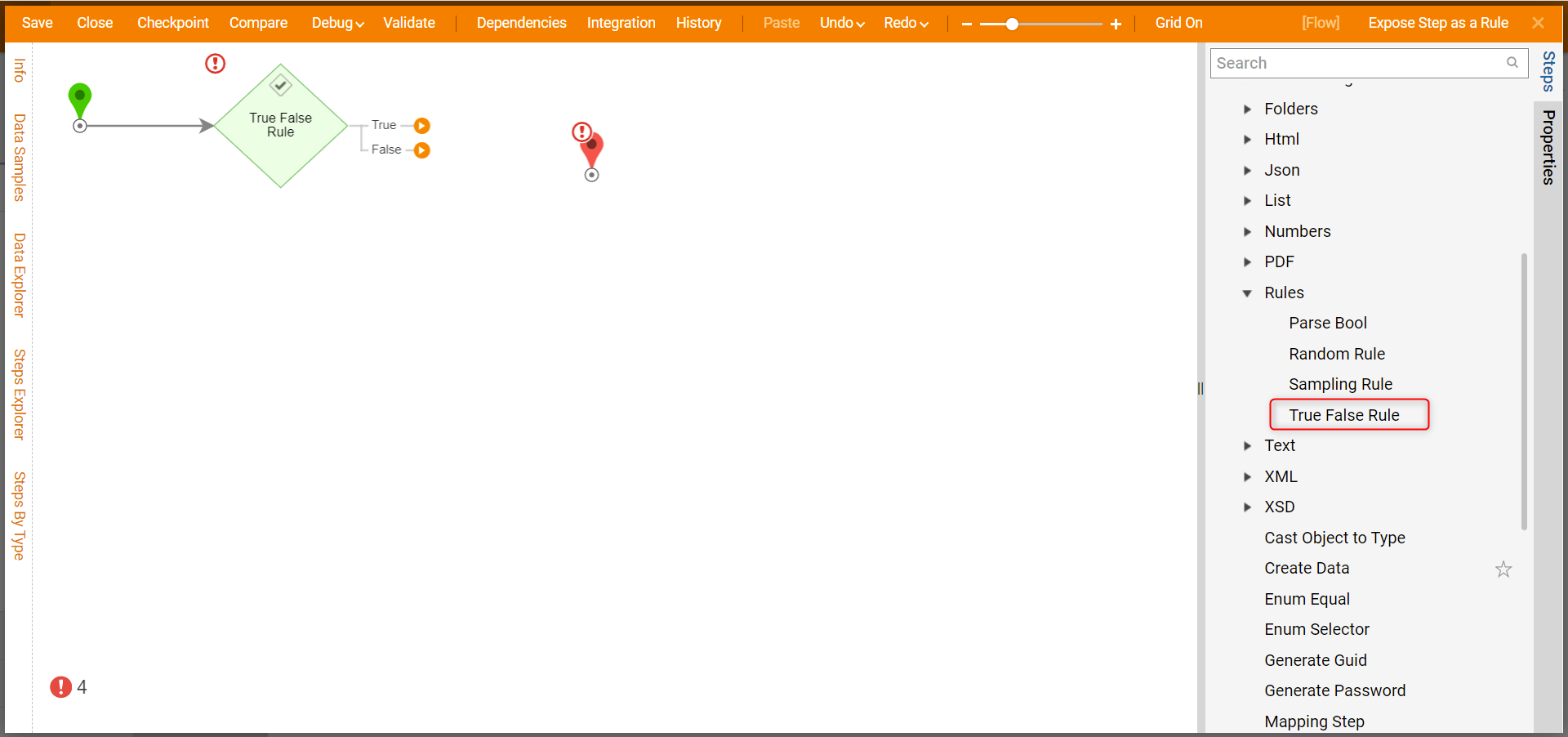
- This is a Rule step that has two outcome paths, True and False. Under the Inputs category on the Properties panel, click Unknown and select Constant. Then, click the checkbox to set it to True.
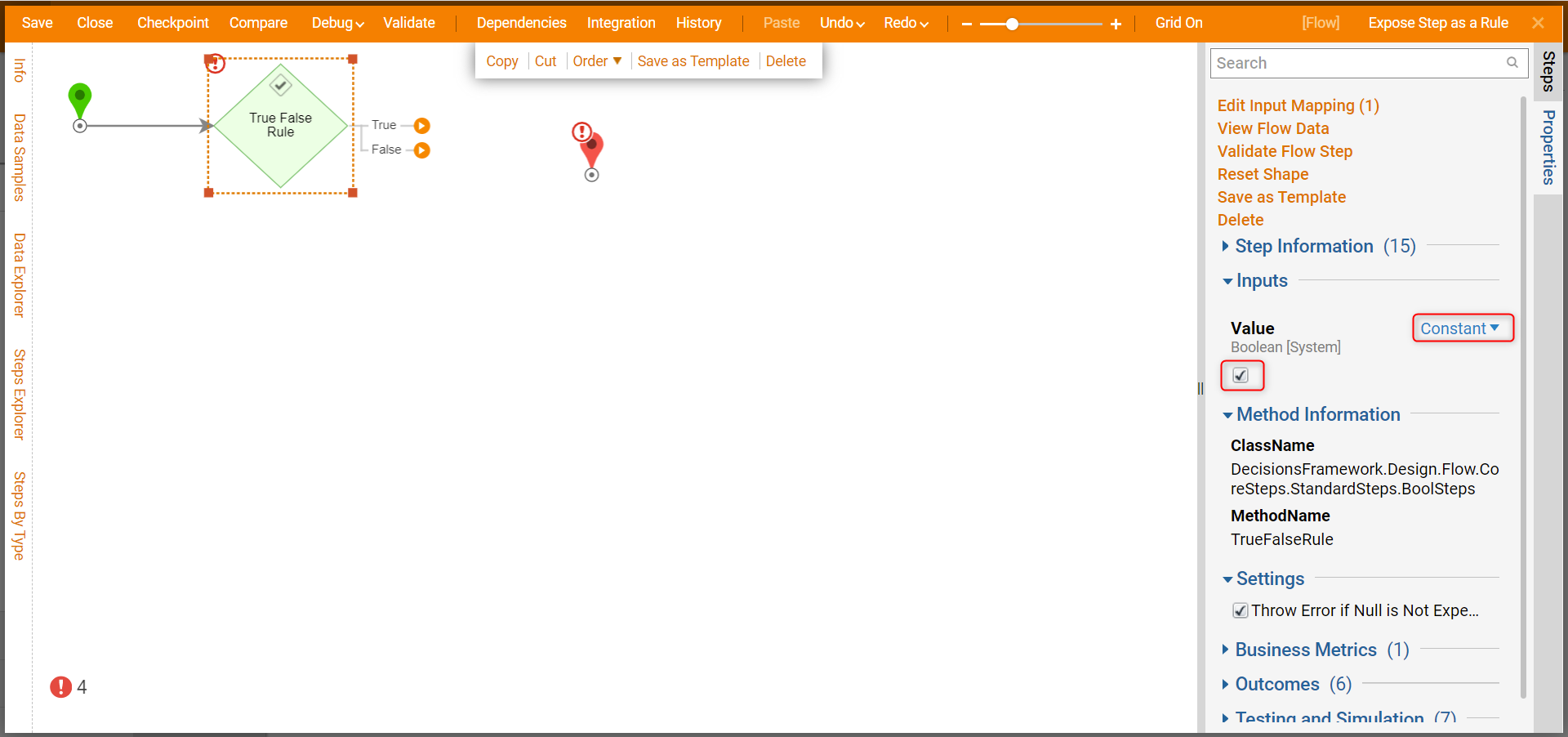
- Under the Outcomes category, ensure Expose Step as a Rule is selected.
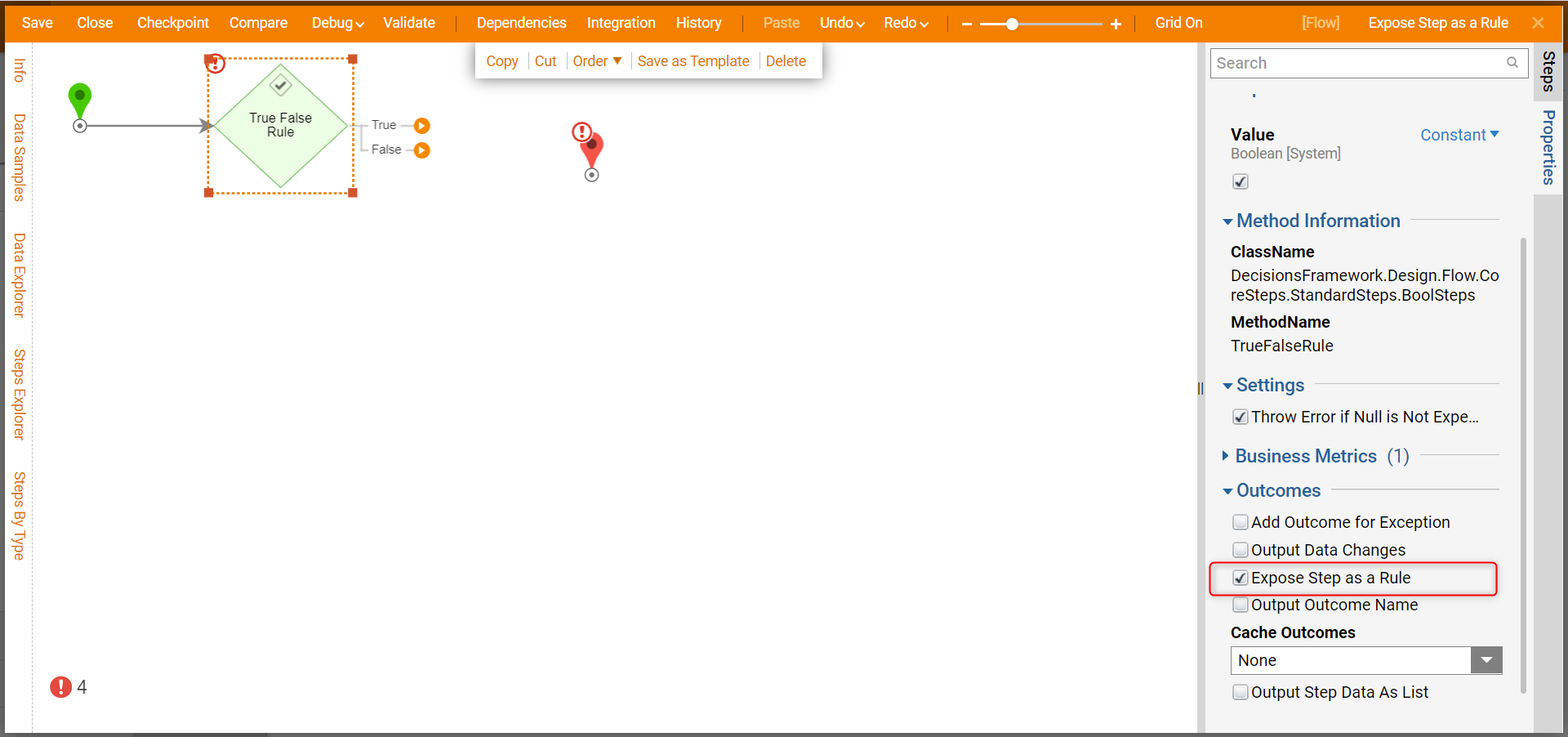
- Connect the True path and False path to the End step and click Save on the top action bar.
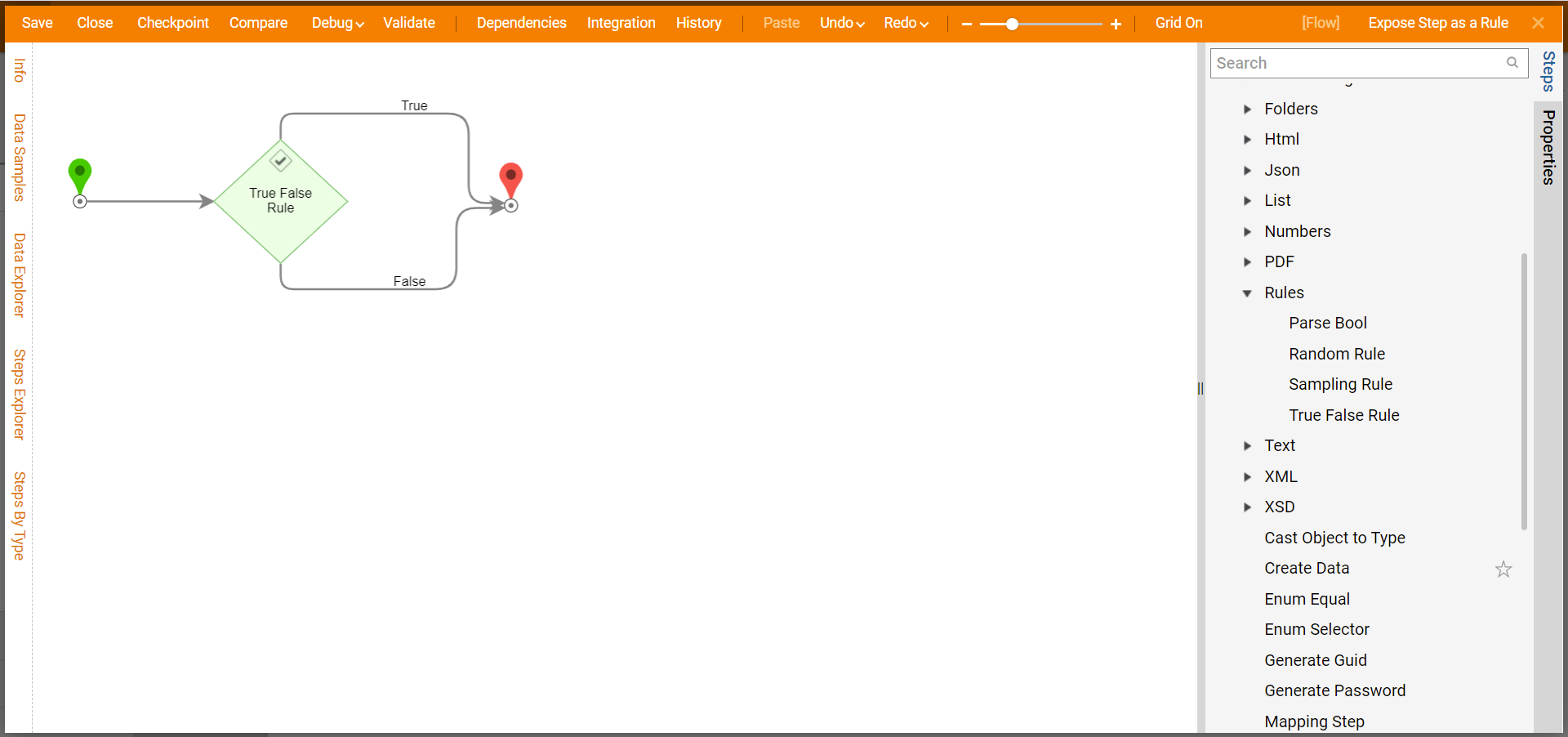
Debug
- Select Debug on the top action bar. Then, click FULL.
- In the debugger select the True False Rule step, click Execution 1, and choose View Input/Output Data.The Output details that the step went down the True path and the Data brackets are empty.
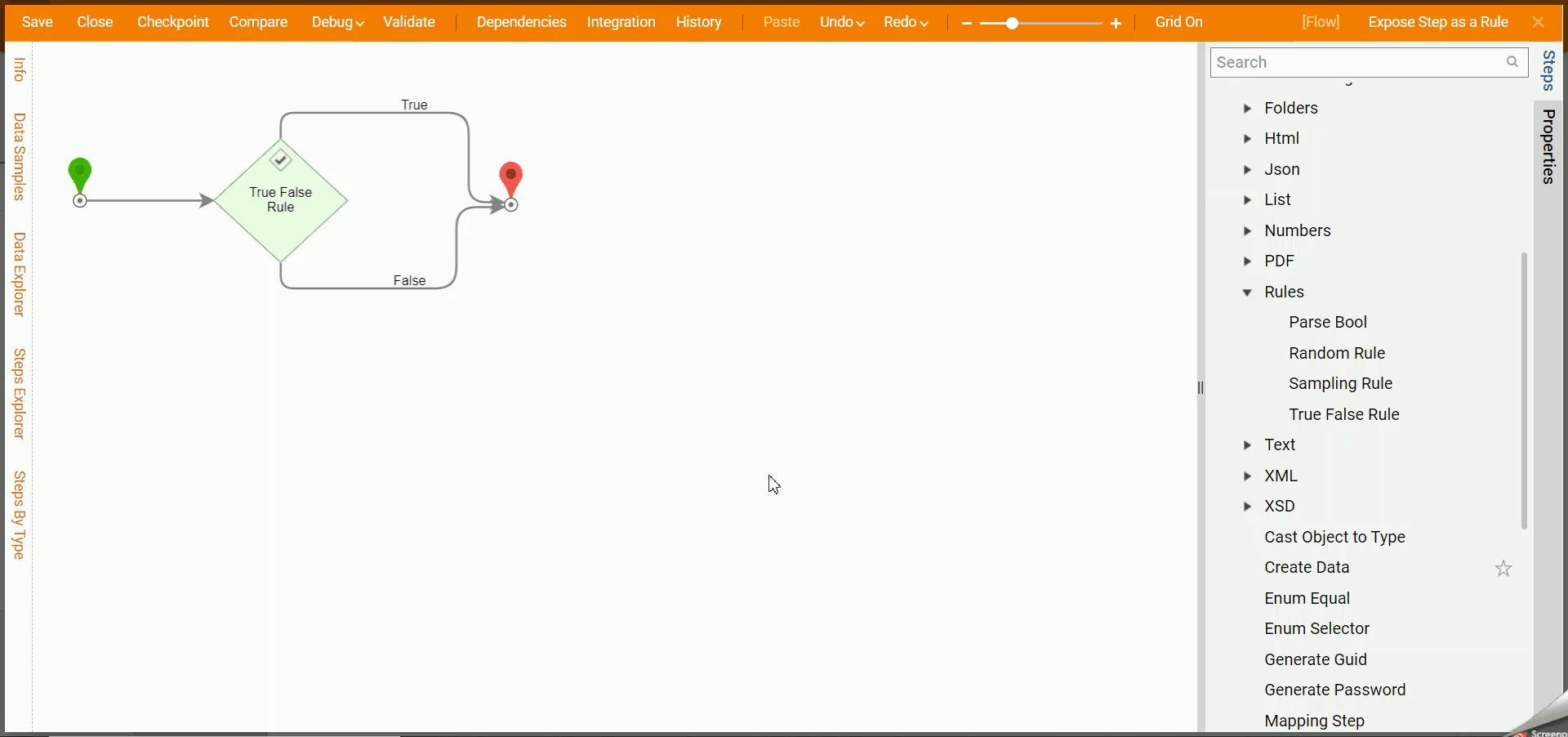
- Back in the Flow Designer with the True False Rule step selected, under Outcomes unselect Expose Step as a Rule. Notice how the rule has a Done path now. Select Debug in the top action bar
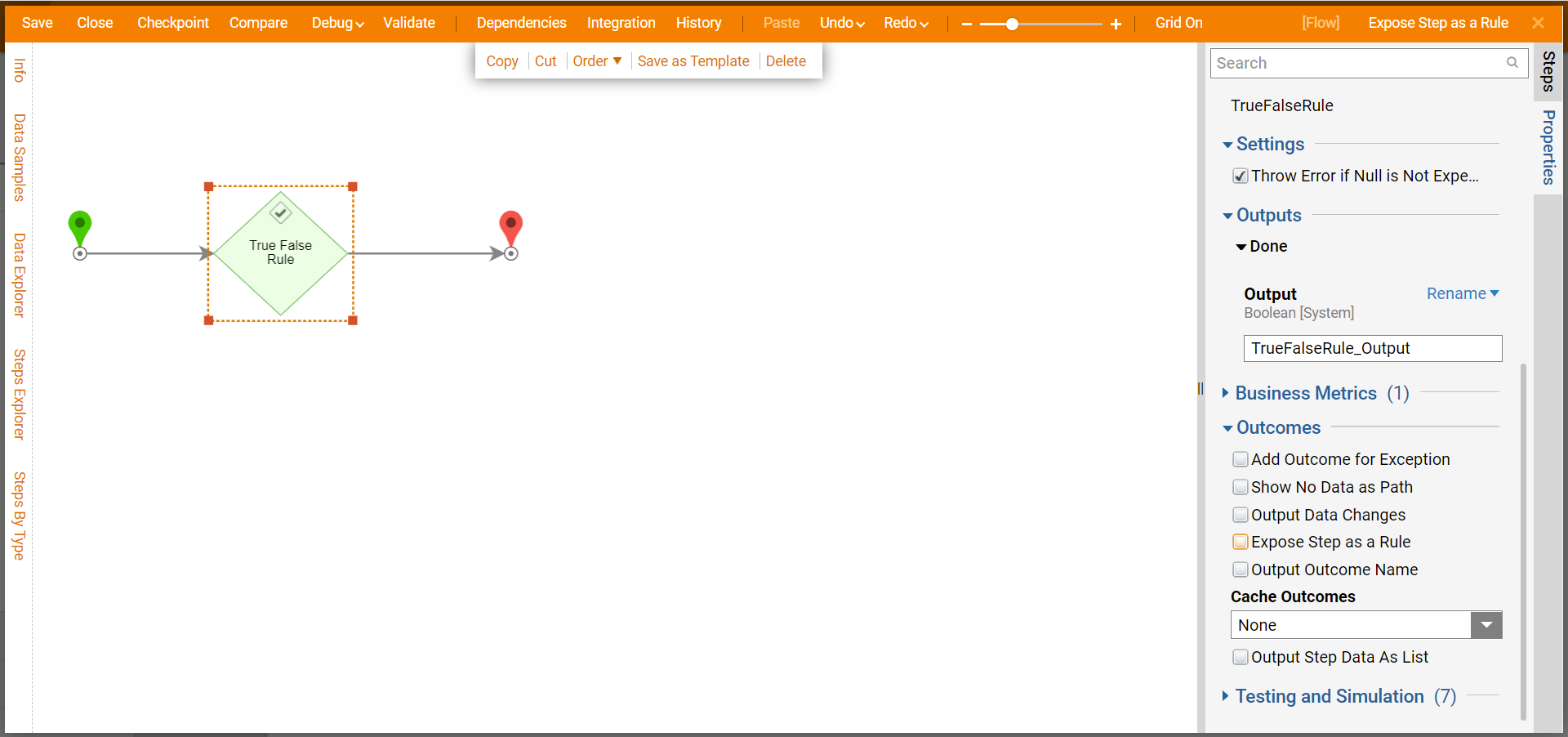
- In the debugger select the True False Rule step, click Execution 1, choose View Input/Output Data. The Output Data contains the result of the Rule.
